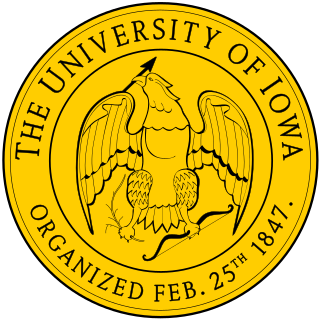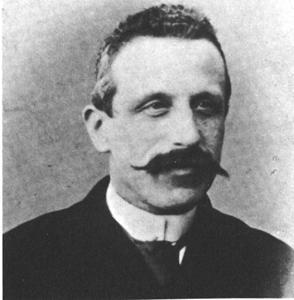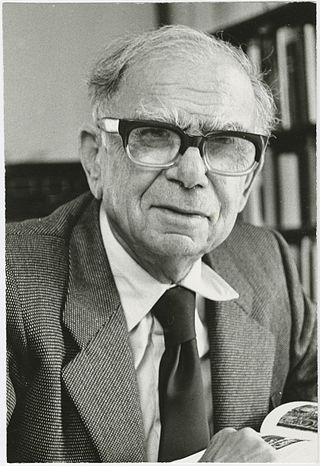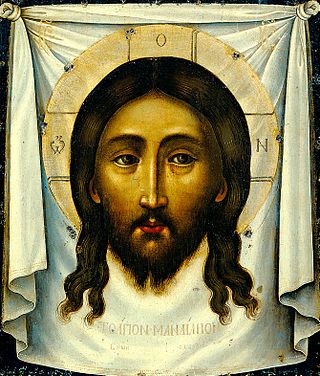Related Research Articles

The University of Iowa is a public research university in Iowa City, Iowa, United States. Founded in 1847, it is the oldest university in the state. The University of Iowa is organized into 12 colleges offering more than 200 areas of study and 7 professional degrees.
A number of alleged relics associated with Jesus have been displayed throughout the history of Christianity. While some individuals believe in the authenticity of Jesus relics, others doubt their validity. For instance, the sixteenth-century philosopher Erasmus wrote about the proliferation of relics, and the number of buildings that could be constructed from wooden relics claimed to be from the crucifixion cross of Jesus. Similarly, at least thirty Holy Nails were venerated as relics across Europe in the early 20th century. Part of the relics are included in the so-called Arma Christi, or the Instruments of the Passion.

Erwin Panofsky was a German-Jewish art historian, whose academic career was pursued mostly in the U.S. after the rise of the Nazi regime.

According to Christian tradition, the Image of Edessa was a holy relic consisting of a square or rectangle of cloth upon which a miraculous image of the face of Jesus Christ had been imprinted—the first icon. The image is also known as the Mandylion, in Eastern Orthodoxy, it is also known as Acheiropoieton.
The Shroud of Turin, also known as the Holy Shroud, is a length of linen cloth that bears a faint image of the front and back of a man. It has been venerated for centuries, especially by members of the Catholic Church, as the actual burial shroud used to wrap the body of Jesus of Nazareth after his crucifixion, and upon which Jesus's bodily image is miraculously imprinted. The human image on the shroud can be discerned more clearly in a black and white photographic negative than in its natural sepia color, an effect discovered in 1898 by Secondo Pia, who produced the first photographs of the shroud. This negative image is associated with a popular Catholic devotion to the Holy Face of Jesus.

Secondo Pia was an Italian lawyer and amateur photographer. He is best known for taking the first photographs of the Shroud of Turin on 28 May 1898 and, when he was developing them, noticing that the photographic negatives showed a positive image of the man in the shroud in addition to a clearer rendition of the image. The image he obtained from the shroud has been approved by the Roman Catholic Church as part of the devotion to the Holy Face of Jesus.

Richard Krautheimer was a German art historian, architectural historian, Baroque scholar, and Byzantinist.
Oleg Grabar was a French-born art historian and archeologist, who spent most of his career in the United States, as a leading figure in the field of Islamic art and architecture in the Western academe.

Acheiropoieta — also called icons made without hands — are Christian icons which are said to have come into existence miraculously; not created by a human. Invariably these are images of Jesus or the Virgin Mary. The most notable examples that are credited by tradition among the faithful are, in the Eastern church, the Mandylion, also known as the Image of Edessa, and the Hodegetria, and several Russian icons, and in the West the Shroud of Turin, Veil of Veronica, Our Lady of Guadalupe, and the Manoppello Image. The term is also used of icons that are only regarded as normal human copies of a miraculously created original archetype.

The Chapel of the Holy Shroud is a Baroque style Roman Catholic chapel in Turin in northern Italy, constructed to house the Shroud of Turin, a religious relic believed to be the burial shroud of Jesus of Nazareth. It is located adjacent the Turin Cathedral and connected to the Royal Palace of Turin. The chapel was designed by architect-priest and mathematician Guarino Guarini and built at the end of the 17th century (1668–1694), during the reign of Charles Emmanuel II, Duke of Savoy, and is considered one of the masterpieces of Baroque architecture. Heavily damaged in a fire in 1997, it underwent a complex 21 year restoration project, and reopened in 2018. The chapel has an intricate and self-supporting wooden and marble dome.
The University of Iowa College of Liberal Arts and Sciences (CLAS) is the largest of the eleven colleges at The University of Iowa, founded in 1900. In 2007-2008, there was a total of 16,417 undergraduates enrolled in CLAS, 81% of all undergraduates at the university, and about 2,400 graduate students. The largest undergraduate majors are: Psychology, English, Biology, Communication Studies, Interdepartmental Studies, Political Science, School of Art and Art History, History, International Studies, and Journalism. The College is housed in Schaeffer Hall, part of the historic Pentacrest on the university's Iowa City campus.

The History of the Shroud of Turin begins in the year 1390 AD, when Bishop Pierre d'Arcis wrote a memorandum where he charged that the Shroud was a forgery. Historical records seem to indicate that a shroud bearing an image of a crucified man existed in the possession of Geoffroy de Charny in the small town of Lirey, France around the years 1353 to 1357. The history from the 15th century to the present is well documented.

The Shroud of Turin Research Project refers to a team of scientists which performed a set of experiments and analyses on the Shroud of Turin during the late 1970s and early 1980s. STURP issued its final report in 1981.
Michael W. Meister is an art historian, archaeologist and architectural historian at the University of Pennsylvania. He is the W. Norman Brown Professor in the Department of History of Art and South Asia Studies, and has served as chair of the Department of South Asia Studies and as the director of the University of Pennsylvania's South Asia Center. In addition, he is Consulting Curator, Asian Section, University of Pennsylvania Museum of Archaeology and Anthropology, and Faculty Curator of the South Asia Art Archive within the Penn Library's South Asia Image Collection.
Michael Ann Holly is an American art historian who has worked on historiography and the theory of art history.
John Richard "Jaś" Elsner, is a British art historian and classicist, who is Professor of Late Antique Art in the Faculty of Classics at the University of Oxford, Humfry Payne Senior Research Fellow in Classical Archaeology and Art at Corpus Christi College, Oxford, and Visiting Professor of Art History at the University of Chicago. He is mainly known for his work on Roman art, including Late Antiquity and Byzantine art, as well as the historiography of art history, and is a prolific writer on these and other topics. Elsner has been described as "one of the most well-known figures in the field of ancient art history, respected for his notable erudition, extensive range of interests and expertise, his continuing productivity, and above all, for the originality of his mind", and by Shadi Bartsch, a colleague at Chicago, as "the predominant contemporary scholar of the relationship between classical art and ancient subjectivity".
Anthony Vidler was an English architectural historian and critic. He was Professor at the Irwin S. Chanin School of Architecture at The Cooper Union.
Caroline A. Jones, is an American art historian, author, curator, and critic. She teaches and serves within the History Theory Criticism Section of the Department of Architecture at MIT School of Architecture and Planning, Cambridge, Massachusetts, United States.
Stephen D. Murray, Professor Emeritus of the Department of Art History and Archaeology at Columbia University, is an architectural historian, specialising in Romanesque and Gothic architecture. Before his retirement, Murray held the Lisa and Bernard Selz chair in Medieval Art History at Columbia University. He has written several important monographs on French Gothic cathedrals, including Troyes, Beauvais, and Amiens. His work combines analysis of architectural details with discussion of medieval writing about cathedrals. He is considered a pioneer in the development of digital media and visual arts resources for educational use.

Ilia Rodov is a historian of art and researcher of Jewish visual culture. He is a professor at the Department of Jewish Art and holds The Samson Feldman Chair in History and Culture of East European Jewry at Bar-Ilan University.
References
- ↑ "Iowa school seeks new director for its art museum". Siouxcityjournal.com. 2010-04-11. Retrieved 2011-02-10.
- ↑ "Directory - School of Art and Art History - The University of Iowa". Art.uiowa.edu. Archived from the original on 2011-01-02. Retrieved 2011-02-10.
- 1 2 "'School of Art and Art History'". art.uiowa.edu/. Retrieved 2012-01-06.
- ↑ "Awards". collegeart.org/. Archived from the original on 2011-03-24. Retrieved 2012-01-06.